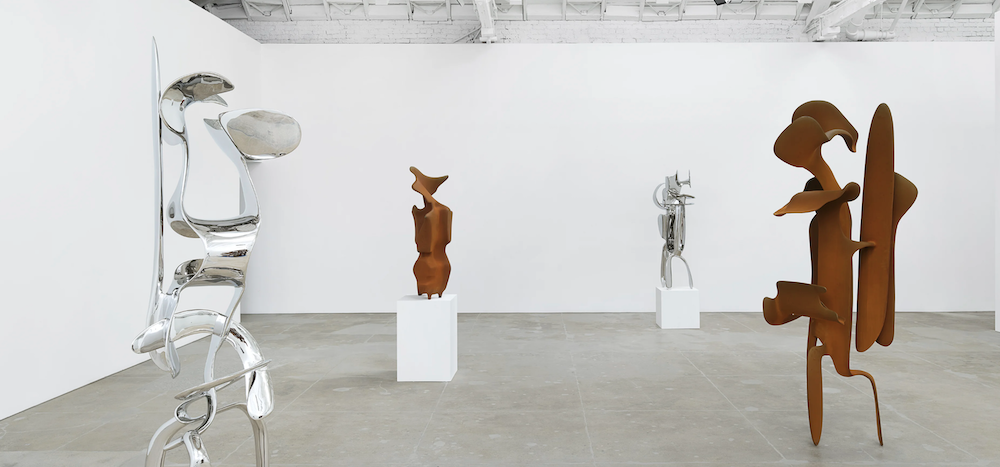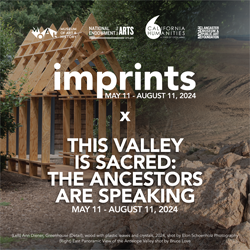One of the most durable traditions in Modernism, organic form sculpture emerged in the first part of the 20th century in the work of Constantine Brancusi, Jean Arp, Alberto Giacometti and others. Particularly associated with Surrealism, the organic form was a kind of foil to the geometric sculpture associated with Cubism and Constructivism, a more romantic kind of art that employed chance methods and serendipity. The organic form continued to be a major force in sculpture throughout the 20th century in the works of Picasso, Henry Moore, Barbara Hepworth, and Isamu Noguchi, and the tradition has continued into the 21st century, most notably in the work of Tony Cragg.
Cragg, who is British but lives in Germany, recently showed a large group of sculptures at Marion Goodman’s expansive new space in Hollywood. The exhibition was impressive on various levels, especially due to the artist’s capacity for formal invention, which rivals Picasso’s. Wildly divergent forms, varying from monolithic closed-form sculptures to extremely complex open-form works, are beguiling in their variety and unpredictability. Cragg is a virtuoso at the various methods for making a sculpture, including carving, welding, and especially casting, a process that particularly suits his work.
Hedge (2023), a large work in Corten steel, is more open-form than most of Cragg’s earlier sculptures and is one of the most complex works in his oeuvre. Composed of a myriad of individual organic forms that appear to have been cast and then welded together, the piece is a labyrinth-like tangle of twisting, undulating shapes that create a dense web, not unlike that in a Pollock painting. The sculpture’s configuration emphasizes the negative spaces between the forms and creates the feeling of airiness within the piece, making it feel solid yet permeable, as if one could enter it visually and physically.
Three works in the Incident series are related to but not as complex as Hedge and have more affinity with the notion of sculpture as drawing in space, as in the welded sculpture of David Smith. One, in cast stainless steel and polished to a perfect mirror surface, dazzles the eye, while another, in Corten steel, has an oxidized rust-colored exterior that allows for more perception of the form. Both sculptures allude to the image of a standing figure; given that 99% of the history of sculpture is made up of figure sculpture, any abstraction that stands vertically can suggest that image. Yet one of the most intriguing aspects of Cragg’s work is the dialog between abstraction and figuration. Some of his sculptures that at first appear to be completely abstract contain silhouettes of profiles of faces on closer examination. In contrast, others suggest figurative associations more indirectly, as in the Masks series (2023), made from oak bog wood and Guatemalan green stone, which suggest the form of a face without actually looking like one.
One of the reasons that organic form abstract sculpture has endured is that it constitutes something essential about sculpture in how the form can speak directly to our inner psyches. By eschewing most mimetic aspects of sculpture and focusing mainly on the expressiveness of form, it reveals what sculpture does best. Form can be tremendously powerful, whether it’s images from nature like gnarly oak branches or those from the mind and hand of an artist like Cragg, whose current work is a testament to both the longevity of the genre and for its future as a viable form of art.










David got it right. I have seldom, if ever, felt so humbled and awed as by this Cragg show.
Thank you, Lloyd, that means a lot coming from you, I’m a long time fan of your sculpture. And I was likewise overwhelmed by the show.